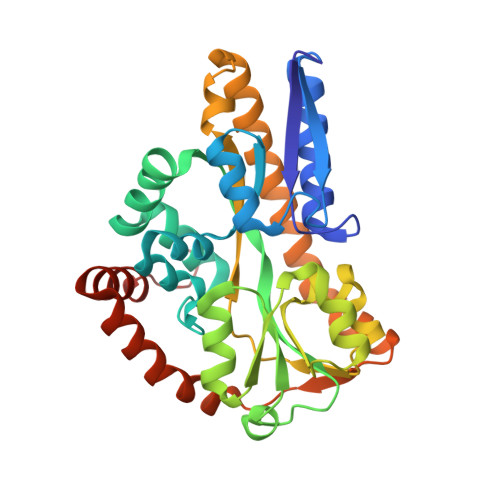Tripartite ATP-Independent Periplasmic (Trap) Transporters Use an Arginine-Mediated Selectivity Filter for High Affinity Substrate Binding.
Fischer, M., Hopkins, A.P., Severi, E., Hawkhead, J., Bawdon, D., Watts, A.G., Hubbard, R.E., Thomas, G.H.(2015) J Biol Chem 290: 27113
- PubMed: 26342690
- DOI: https://doi.org/10.1074/jbc.M115.656603
- Primary Citation of Related Structures:
2XWI, 2XWK, 2XWO, 2XWV - PubMed Abstract:
Tripartite ATP-independent periplasmic (TRAP) transporters are secondary transporters that have evolved an obligate dependence on a substrate-binding protein (SBP) to confer unidirectional transport. Different members of the DctP family of TRAP SBPs have binding sites that recognize a diverse range of organic acid ligands but appear to only share a common electrostatic interaction between a conserved arginine and a carboxylate group in the ligand. We investigated the significance of this interaction using the sialic acid-specific SBP, SiaP, from the Haemophilus influenzae virulence-related SiaPQM TRAP transporter. Using in vitro, in vivo, and structural methods applied to SiaP, we demonstrate that the coordination of the acidic ligand moiety of sialic acid by the conserved arginine (Arg-147) is essential for the function of the transporter as a high affinity scavenging system. However, at high substrate concentrations, the transporter can function in the absence of Arg-147 suggesting that this bi-molecular interaction is not involved in further stages of the transport cycle. As well as being required for high affinity binding, we also demonstrate that the Arg-147 is a strong selectivity filter for carboxylate-containing substrates in TRAP transporters by engineering the SBP to recognize a non-carboxylate-containing substrate, sialylamide, through water-mediated interactions. Together, these data provide biochemical and structural support that TRAP transporters function predominantly as high affinity transporters for carboxylate-containing substrates.
Organizational Affiliation:
York Structural Biology Laboratory, Departments of Chemistry, University of York, P. O. Box 373, York YO10 5YW.















